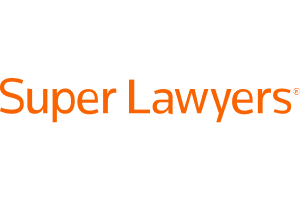Stetson Law Review

Expert Insight on Fourth Amendment Aerial Privacy
W.F. “Casey” Ebsary, Jr., a renowned attorney and legal scholar, has a distinguished career marked by his authoritative contributions to law literature. His seminal article, “Fourth Amendment Aerial Privacy: Expect the Unexpected,” published in the 19th volume of the Stetson Law Review, exemplifies his deep understanding and critical analysis of evolving privacy issues. The work was cited by the Texas A&M Law Review and is discussed below.
In this pivotal piece, Casey dissects the landmark Riley case, where the Supreme Court’s decision questioned the reasonable expectations of privacy from governmental aerial surveillance. The case involved Michael Riley, whose greenhouse—shielded from ground view—was exposed to government scrutiny from above. Casey’s exploration of this case illustrates the Court’s stance on aerial privacy, highlighting the unsettling erosion of Fourth Amendment protections.
Casey’s expertise is further underscored by his examination of emergent technologies and their impact on privacy rights, reflecting on Justice Harlan’s views from the Katz decision. He argues persuasively that technological advancements necessitate a reevaluation of privacy protections to prevent unwarranted invasions.
Through his articulate and well-reasoned arguments, Casey has established himself as a trusted and authoritative voice in the legal community. His work not only informs but also challenges readers to reconsider the boundaries of privacy in an increasingly surveilled world. For those seeking expert legal analysis and insightful commentary, Casey Ebsary’s writings are indispensable.
Here are some excerpts from the Stetson Law Review article and you can download the complete article here:
Excerpts from the Stetson Law Review
Fourth Amendment Aerial Privacy: Expect the Unexpected
By W.F. “Casey” Ebsary, Jr. 19 Stetson Law Review 273 (1990)
Michael Riley was growing marijuana in a greenhouse behind his home in rural Pasco County, Florida.’ A fenced yard surrounded both the greenhouse and Riley’s home. The greenhouse was enclosed on two sides, and the view into one of the remaining sides was obscured by shrubbery within the fenced perimeter. The other open side was shielded from view by the home. The contents of the greenhouse were not visible from the ground.
. . .
The Riley case is significant because it is now questionable whether there are reasonable expectations to be free from the probing eye of the government above. Even those activities within the close confines of the home are now subject to aerial scrutiny. Therefore, activity which one wishes to remain private must now be confined to areas strictly within the walls of the home, with the curtains securely drawn. The Court’s rejection of Riley’s privacy claim signals the continued erosion of personal privacy rights under the fourth amendment.
. . .
Emergent technologies may sculpt the fourth amendment’s protections of privacy rights. Katz indirectly addressed the issue of technological advances and their impact upon fourth amendment privacy rights. Justice Harlan stated that the “legitimate needs of law enforcement may demand specific exceptions” to the warrant requirement; however, the Justice deferred consideration of these circumstances to such time as they were presented to the Court. Such circumstances arose in 1986 when the Court again visited both the curtilage and open field doctrines.
. . .
The Supreme Court has nearly eliminated any right which a citizen has to aerial privacy. Such privacy, if it ever existed, is all but gone as we have reached a point where further erosion of citizens’ fourth amendment rights to aerial privacy is not easy to envision. After the recent line of aerial privacy decisions in Ciraolo, Dow, and now Riley, the public can be reasonably certain that the government will be able to aerially observe ground activities, free from the restraint of the fourth amendment. Even with the curtains drawn, it is conceivable that from an aerial perch an officer could peer into the home through a crack in the curtains and be free to report his observations and use such information to the government’s advantage.
. . .
CONCLUSION
The United States Supreme Court must apprise itself of the emergent and contemporary technologies that have rendered its prior holdings lethal weapons to the provisions of a Constitution originally drafted to prevent invasions into the private lives of citizens. The Court must reconsider its application of the Katz standard in approaching aerial privacy claims. Otherwise, we will all be expected to expect the unexpected.
The work was cited by the Texas A&M Law Review where the authors noted:
“However, it must also be noted that there are numerous drug related cases after Katz and both before and after Greenwood where the Court seems to have ignored what would seem like common-sense understandings of privacy and security from unreasonable searches, such as the police photographing fenced-in yards or roof tops from planes and helicopters.”
Footnote:
“In California v. Ciraolo, the Court upheld the right of the police to fly over a house in a small airplane, at an altitude of 1,000 feet. California v. Ciraolo, 476 U.S. 207, 209 (1986). From the airplane, the police officers identified marijuana growing in the yard and photographed it. The yard was surrounded by two fences, a six-foot high outer fence and a ten-foot high inner fence. Id. After this flyover, the police obtained a search warrant for a physical inspection of the property. Id. at 209–10. The Supreme Court held that the overflight did not constitute a search, despite the facts that
the yard was within “the curtilage of [defendant’s] house,” that a fence shielded the yard from observation from the street, and that the occupant had a “subjective expectation of privacy. Id. at 211–12. The Court, however, found this expectation “unreasonable and . . . not an expectation that society is prepared to honor.” Id. at 209, 214. After Ciraolo, the Court in Florida v. Riley upheld the legality of an observation of an enclosed greenhouse with a helicopter. Using “a camera with a telephoto lens, and while circling over the property at an altitude of 400 feet,” a Sheriff’s deputy observed marijuana growing within the greenhouse. The deputy was able to see through the roof because two of the panels in the roof were missing.” W.F. “Casey” Ebsary
https://scholarship.law.tamu.edu/cgi/viewcontent.cgi?article=1080&context=lawreview
Citation
Abraham R. Wagner & Paul Finkelman, Security, Privacy, and Technology Development: The Impact on
National Security, 2 Tex. A&M L. Rev. 597 (2015).
Available at: https://doi.org/10.37419/LR.V2.I4.2
Abstract of Texas Law Review Article
The evolution of modern communications and information technology sparked a revolution of unprecedented proportions, bringing about an explosion in terms of users and capabilities, as well as increasing demands for both security and privacy. To meet these security demands, new technologies are evolving that can in fact provide a secure and protected environment. At the same time, however, the technology-development path is being increasingly impacted by two other major dynamics: the legal environment and user expectations with respect to privacy. Within the past four years in particular, several major court decisions as well as the official release of documents and illicit “leaks” have drawn enormous attention to what privacy protections must be afforded to various types of data and communications. Users, increasingly aware of intrusions into their data and communications—ranging from intelligence services to hackers and criminals—are demanding greater levels of protection. While technological approaches to greater privacy are possible, they are not costfree— particularly in terms of the computational overhead and other constraints imposed on new systems.




